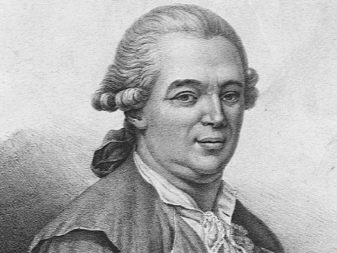The uniqueness of the glass harmonica
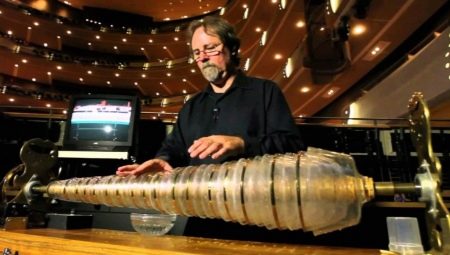
The uniqueness of the glass harmonica is beyond doubt. But many know almost nothing about the history of this musical instrument and about its sound. Also, interesting facts related to it are not well known.


Instrument device
Glass harmonica Is a relatively rare musical instrument. For its manufacture, hemispheres of various sizes are used. These glass items are strung on a metal axis. Typically, the axis is oriented horizontally and is expected to rotate effectively. An assembly of hemispheres is partially placed in a resonating box, where dilute acetic acid is poured.
Such a solution allows for constant moistening of the working parts.
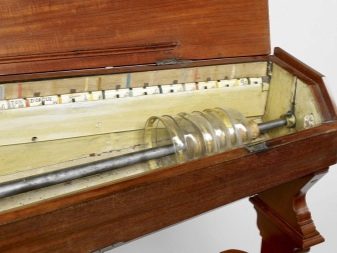
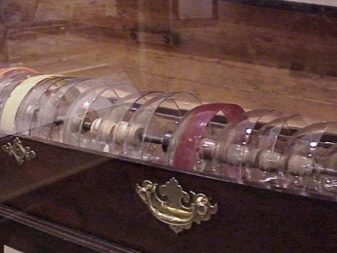
Of course, striking a glass container itself had been used in music for centuries before the invention of the glass harmonica. However, the use of friction to generate sounds has proven to be an absolute innovation. The main capabilities of the instrument are related to the fact that the playing technique is close to the method used on keyboards. Moreover, it was possible to develop a real keyboard version, where the presses set in motion a special mechanism connected to the sounding cups. For glass harmonics, chromatic tuning is typical, and its range covers 2.5 - 4 octaves in different models.
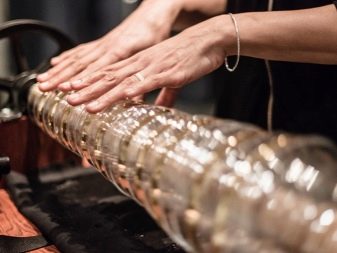
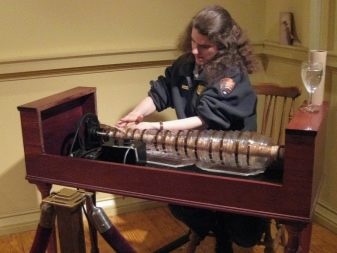
History
The origin of this instrument is controversial. Most experts believe that musical instruments made of glass were developed by Middle Eastern craftsmen. In European countries, they began to be used not earlier than the end of the XIV century.The setting of 30-40 glasses was worked out by the middle of the 17th century - there are a number of written references to this. However, just a few decades later, this kind of music quietly faded away.
Its restoration dates back to 1744. And if the early medieval masters who made music cups are completely unknown personally, then the authorship of the Irishman Richard Pakrich in the 18th century is beyond doubt. The "Seraphim" set (named after one of the types of angels in Christian mythology), together with its creator, made a brilliant tour throughout Europe.
The furor was so great that the future legendary composer Gluck was not too lazy to master a new instrument and hold a concert in London in 26 glasses.
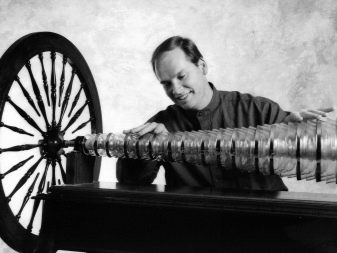

Decisive events took place in 1757. It was then that Benjamin Franklin arrived in the British capital in order to change a number of orders of the Governor of Philadelphia. But in addition to political activities, he was also a scientist and an inventor. Therefore, Franklin, succumbing to the mass enthusiasm, went beyond many other people and tried to modify the instrument. Instead of simple household cups, he suggested using hemispherical cups mounted on a steel shaft.
The lower section of the modified cups is dipped in this design into a container with water. The rotation of the shaft is initiated by a special foot pedal. When you turn it, moisturizing occurs evenly. Further, the musician only has to put his fingers to the perimeter of the cups to get a gentle sound. In fact, all subsequent glass harmonic models are based on the Franklin design, and not the original Pakrich sample.
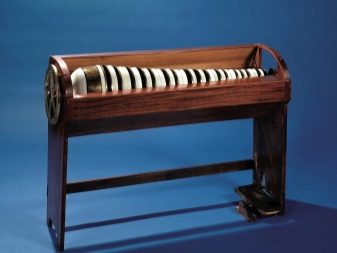
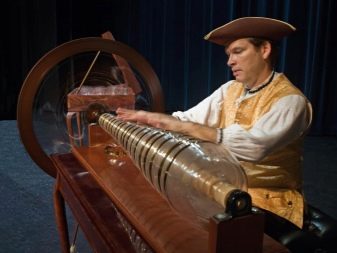
Just such a device has become very widespread in Germany and Austria. Soon it was appreciated by residents of other European states.
A popular doctor and at the same time a charlatan, whose activities are still controversial, Franz Mesmer came up with the idea of using a glass harmonica to relieve nervous tension in his patients. Just on a visit to Mesmer, Mozart himself heard her play, who immediately composed a suitable melody.
However, Mozart was not the only composer to create for the Franklin instrument. In addition to him, they were also engaged in this:
-
Berlioz;
-
Strauss;
-
Beethoven;
-
Glinka;
-
Rubinstein.

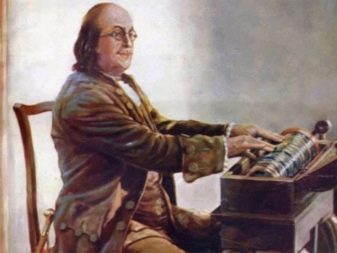
The latter introduced the playing of the harmonica into his "Demon", making sure that the sound of the orchestra was mysterious. Glinka also needed the coloring of fabulous events with her help when composing Ruslan and Lyudmila. Goethe and Paganini left rave reviews about the instrument. But not everyone was so supportive. The authorities of a number of German cities passed laws prohibiting the use of harmonica. Motivating this decision, they talked about:
-
a very strong effect on the state of mind of the listeners;
-
provoking mental disorders;
-
fear in animals - and yes, everyone referred to this officially.
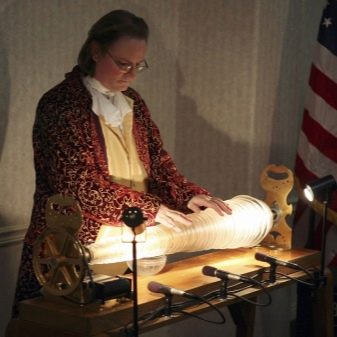
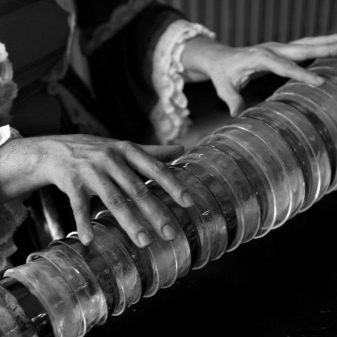
A negative, frightening reputation developed. Many unpleasant, negative events were attributed to the influence of glass harmonics. A number of musicians who used it also succumbed to this mood. There were complaints of dizziness, muscle cramps, cramps and incomprehensible anxiety. And the above German laws began to appear after the case when a child died during a concert, according to unverified data.
Bad opinions are largely connected, apparently, with the high frequencies of this instrument. It was rumored that such tones have a magical effect and even cause "summon spirits from the underworld." Compared to such claims, the stories of being driven insane looked relatively decent - but no evidence was ever presented.
Changing the glasses to glass plates made it easier to play the harmonica. But she also changed its sound - which destroyed the unique charm of the instrument.
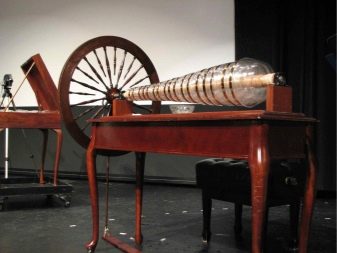
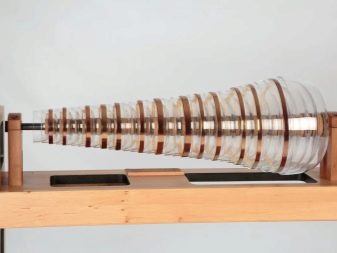
Modernity
Glass harmonica retained any significant popularity only until the middle of the 19th century. Advances in technology allowed other instruments to be made louder and more suitable for large concert halls. Glass plates could be saved by the use of sound amplifiers - but there were still several decades left before them. Old instruments based on them have survived to this day only in museum collections. The renaissance of the glass harmonica began only in the middle of the 20th century.
A number of experimental musicians remembered this old instrument. And even in the 21st century there are several masters who know how to make it. In Russia, only the group "Crystal Harmony" plays "on the glass". True, she uses a glass harp and a modernized version of the harmonica - the verrophone. This device was created relatively recently by a German citizen Reckert. All melodies suitable for harmonica are successfully performed on the verrophone.
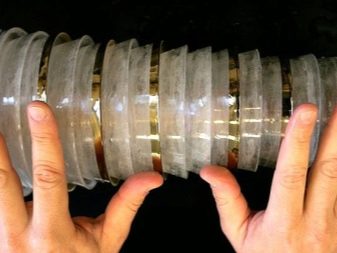
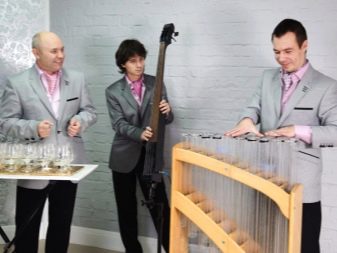
Interesting Facts
In European countries, the glass harmonica was used only for chamber concerts. The most common designs used 37 to 46 cups. Such harmonics covered 3-4 octaves with intermediate positions. It is worth noting that Franklin himself promoted the name Armonica, but the Harmonica variant turned out to be common. The cups were replaced with plates at the very end of the 18th century.
This instrument did not receive much distribution, but it became the basis for the subsequent invention of the celesta and bells. It is not known for certain what kind of glass harmonica was used in the past in Russia. The notes for the harmonics were written in different ways, depending on the specific type and complexity of the melody. It should be noted that the real source of harm in the 18th-19th centuries was not high frequencies, but old crystal saturated with toxic lead. There is also a version that the sinister reputation is partially related to the experiments of Mesmer.

